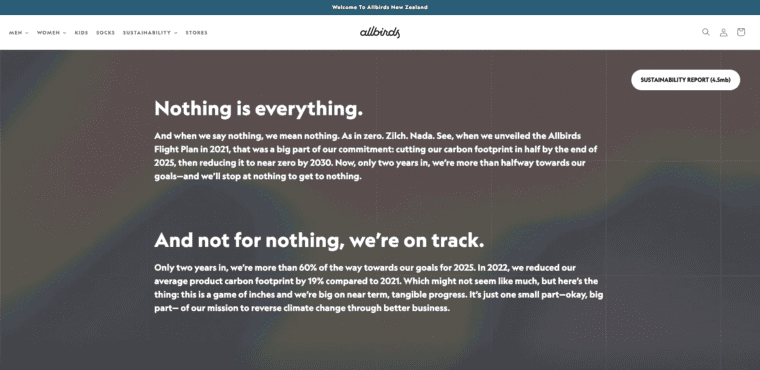Brand Messaging: How to Stand Out

Brand messaging is the art and strategy of communicating your company’s core values, unique selling propositions, and personality to your target audience. It’s the language, tone, and key ideas that consistently represent your brand across all platforms and touchpoints.
Effective brand messaging goes beyond just a tagline or slogan. It encompasses your brand story, your mission statement, your elevator pitch, and the key messages that you want to convey about your brand. When done right, it creates a cohesive narrative that customers can easily understand and connect with, fostering brand recognition, trust, and loyalty.
Let’s dive a little deeper…
What is Brand Messaging?
In an era of information overload and fierce market competition, brand messaging has become more crucial than ever. With countless businesses vying for attention across digital and traditional platforms, a strong brand message can be the difference between blending in and standing out.
At its essence, brand messaging has the following components:
- Defines your brand identity: It articulates who you are, what you stand for, and why you exist. This involves your brand’s mission, vision, and core values, which form the foundation of your identity.
- Communicates both your value proposition and your USP: It clearly expresses what makes your products or services unique and beneficial to customers. The value proposition conveys the overall benefits and value to the customer, while the USP highlights a specific unique feature or aspect that sets you apart from competitors.
- Outlines your brand promise – This promise goes beyond the immediate benefits of the product or service and speaks to the overall experience and emotional connection the brand aims to deliver. The brand promise is a commitment to the customers about what they can consistently expect from your brand, fostering trust and loyalty.
- Establishes your brand voice and personality: It sets the tone and style of all your communications, ensuring consistency. This includes the language, tone, and style used in all your brand communications, reflecting your brand’s character and values.
- Resonates with your audience: It speaks directly to your target customers’ needs, desires, and pain points. Effective brand messaging should connect emotionally and rationally with your audience, addressing their specific needs and motivations.
- Differentiates you from competitors: It highlights what sets you apart in the marketplace. This involves clearly communicating the distinctive aspects of your brand that provide a competitive advantage.

Image from https://www.allbirds.co.nz/pages/sustainable-practices
Why is Brand Messaging Important?
In a world where consumers are bombarded with thousands of marketing messages daily, clear and compelling brand messaging isn’t just nice to have – it’s essential for survival and growth in the modern business landscape.
Effective brand messaging differentiates your business in a crowded market, making it stand out among competitors. It builds brand recognition and recall, ensuring that your brand stays top-of-mind for consumers. By creating emotional connections with customers, brand messaging fosters loyalty and trust. Consistency across all marketing channels is achieved through well-crafted messaging, providing a unified and coherent brand experience.
Additionally, it guides internal decision-making and shapes company culture, ensuring that every action aligns with the brand’s values and goals.
Well Known Examples of Effective Brand Messaging
Allbirds
Tagline: “Made from nature, for nature.”
Core Values: Sustainability, comfort, and simplicity.
Messaging: Allbirds focuses on their use of natural, sustainable materials to create comfortable footwear. Their messaging underscores their commitment to the environment and transparent practices, resonating with eco-conscious consumers who value simplicity and quality.
Apple
Tagline: “Think different.”
Core Values:
Innovation: Pioneering new technology and pushing the boundaries of what’s possible. Examples include Apple products like the iPhone, iPad, and Mac, which are often seen as industry leaders in innovation.
Simplicity: Creating products that are easy to use and understand. This is evident in the intuitive design of Apple’s operating systems and devices, ensuring a seamless user experience.
Quality: Delivering high-quality products and services. Apple’s meticulous design and manufacturing processes ensure that their products are durable and reliable.
Customer Focus: Putting the customer at the center of everything they do to provide an exceptional experience. Apple’s customer service and support are renowned for being responsive and helpful, ensuring customer satisfaction.
Privacy: Protecting user data and privacy. Features like data encryption and transparent privacy policies underscore Apple’s commitment to safeguarding user information.
Environmental Responsibility: Reducing environmental impact. Apple’s initiatives include using recycled materials, reducing their carbon footprint, and promoting sustainable practices.
Accessibility: Making technology accessible to everyone. Accessibility features in Apple’s products ensure that people with disabilities can use their technology effectively.
Messaging: Apple’s messaging often highlights how their innovative products make life simpler and more efficient. Their tagline “Think different” encapsulates their spirit of innovation and simplicity.
Apple emphasises the premium quality of their products and their commitment to enhancing the user experience. Privacy and environmental responsibility are also key themes, as seen in campaigns like “Privacy. That’s iPhone.” and their extensive reports on sustainability.
Apple’s marketing frequently showcases how their products empower all users, including those with disabilities, further reinforcing their value of inclusivity.
Whittaker’s
Tagline: “Good honest chocolate.”
Core Values: Quality, tradition, and integrity.
Messaging: Whittaker’s highlights their dedication to crafting high-quality chocolate using traditional methods and ethically sourced ingredients. Their messaging conveys a sense of trust and reliability, emphasizing their long-standing presence in the market and their commitment to honesty and excellence.
How to Develop Strong Brand Messaging
Here’s Back9’s Step-by-Step Guide to Crafting Effective Brand Messaging:
1: Understand Your Target Audience
- Research and Analyse: Conduct market research to gather information about your target audience’s demographics, psychographics, needs, desires, and pain points.
- Create Buyer Personas: Develop detailed profiles of your ideal customers to better understand their motivations and behaviors.
- Engage with Your Audience: Use surveys, interviews, and social media listening to gain direct insights from your customers.
2: Define Your Brand’s Core Values and Personality
- Identify Core Values: Determine the fundamental principles that guide your brand’s actions and decisions.
- Establish Brand Personality: Decide on the human characteristics that best represent your brand, such as being trustworthy, innovative, or playful.
- Align with Mission and Vision: Ensure that your core values and personality reflect your brand’s mission and vision statements.
3: Identify Your Unique Selling Proposition (USP)
- Analyse Competitors: Study your competitors to identify gaps and opportunities in the market.
- Highlight Unique Features: Determine the distinct features or benefits of your product or service that set you apart from the competition.
- Validate Your USP: Ensure that your USP is relevant, meaningful, and resonates with your target audience.
4: Craft Clear, Concise, and Memorable Messages
- Develop Key Messages: Create a set of core messages that communicate your value proposition, USP, and brand promise.
- Use Simple Language: Ensure that your messaging is easy to understand and free of jargon.
- Create Taglines and Slogans: Develop catchy and memorable taglines that encapsulate your brand’s essence.
5: Ensure Consistency Across All Touchpoints
- Develop Brand Guidelines: Create a comprehensive brand style guide that outlines the use of logos, colors, fonts, tone, and messaging.
- Train Your Team: Ensure that all team members understand and adhere to the brand guidelines.
- Audit Your Channels: Regularly review all marketing channels, including your website, social media, and print materials, to maintain consistent messaging.
6: Test and Refine Your Messaging Based on Customer Feedback
- Gather Feedback: Use surveys, focus groups, and customer reviews to collect feedback on your messaging.
- Analyse Data: Evaluate the feedback to identify areas for improvement.
- Adjust Messaging: Refine your messages based on the insights gained to better resonate with your audience.
- Monitor and Iterate: Continuously monitor the performance of your messaging and make adjustments as needed to stay relevant and effective.
What should good brand messaging do?
- Cuts through the noise, capturing your audience’s attention
- Builds instant recognition, making your brand memorable
- Fosters emotional connections, turning customers into loyal advocates
- Communicates your unique value, setting you apart from competitors
- Guides consistent communication, reinforcing your brand identity

Common Pitfalls to Avoid
Inconsistent messaging across channels, overly complex or confusing messages, failing to differentiate from competitors, and neglecting to evolve messaging as the brand grows are common pitfalls that can undermine the effectiveness of your brand messaging strategy.
When your messaging lacks consistency across various platforms, it can confuse customers and dilute your brand identity. Similarly, messages that are too complex or unclear can fail to engage your audience, leading to misunderstanding or disinterest. Not standing out from competitors diminishes your brand’s unique value, making it harder for customers to choose you over others.
Lastly, as your brand evolves, failing to update and refine your messaging can make it seem outdated and out of touch with current market trends and customer expectations, ultimately affecting your brand’s relevance and appeal.

Remember, good brand messaging is clear, consistent, and authentic. It should be reflected in everything from your website copy and advertising to your customer service interactions and product packaging.
If you need a hand developing brand messaging for your business, get in touch with us.





